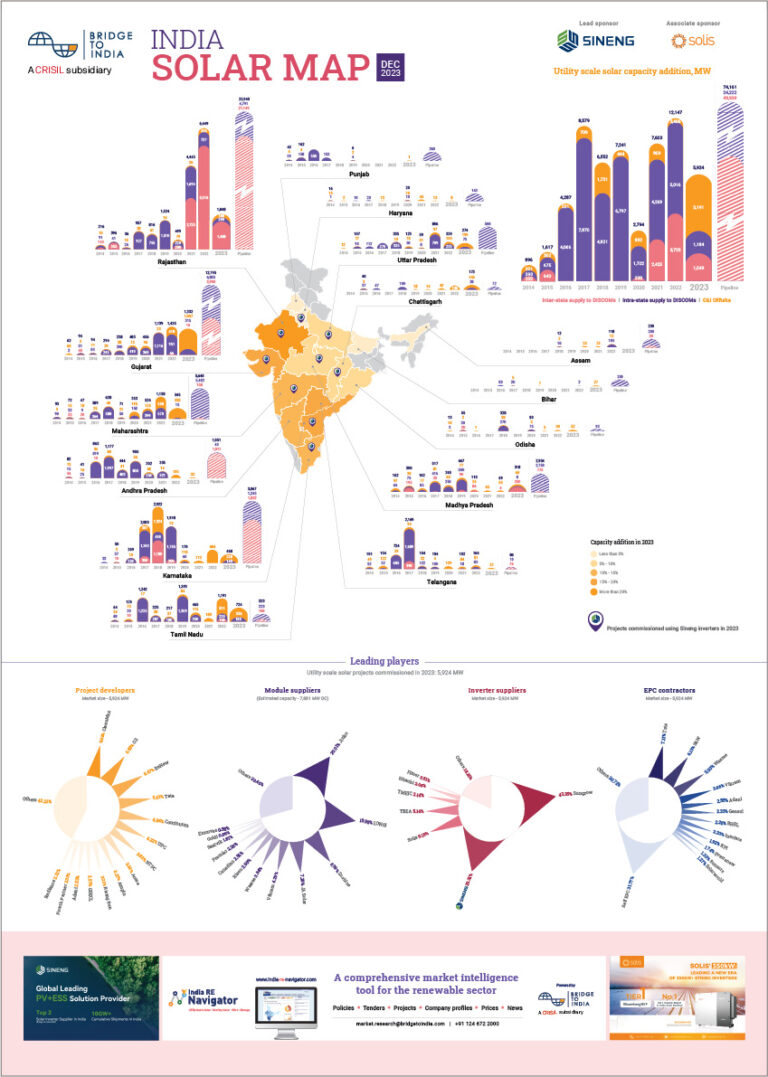Solar Energy Corporation of India (SECI) has received bids totalling 602 MW for a 500 MW tender where SECI proposes to provide 30% capital subsidy to the lowest cost bidders. The tender is restricted to rooftop solar projects for residential and institutional segments (refer).
- The smaller projects category (less than 25 kWp) has been most heavily oversubscribed
- Due to undersubscription in the OPEX category, we estimate actual capacity allocation under this tender of only about 407 MW but actual installation to be even smaller at about 250-300 MW
- The tender should provide a major boost to the residential and institutional market segments
The SECI tender is broken up in three parts:
- 200 MW for projects greater than 25 kWp and commissioned on CAPEX basis where bids have been received for 254 MW from 52 companies – main bidders include Ujaas Energy, Renew, Hero, Jakson, Bosch, Fourth Partner, Sterling & Wilson and Rays Power;
- 200 MW for projects greater than 25 kWp and commissioned on OPEX basis where bids have been received for just 108 MW from 16 companies – main bidders include Renew, Ujaas, Amplus, Cambridge Energy Resources, Cleanmax and Jakson; and
- 100 MW for projects up to 25 kWp and commissioned on CAPEX basis where bids have been received for 240 MW from 91 companies – main bidders include Ujaas, Rays Power and Renew.
BRIDGE TO INDIA had previously pointed out that capacity reserved for sub-25 kWp category was very low as we anticipated a much larger interest for that category (refer). Even though this limit was subsequently increased from 50 MW to 100 MW, this category was heavily oversubscribed. The OPEX category has been understandably undersubscribed as developers’ appetite to offer OPEX model to residential and institutional customers is relatively small.
While there are many large bidders on the list, many prominent rooftop solar names such as Tata Power Solar, Su-Kam, Chemtrols, Vikram Solar and Thermax did not participate in the tender. The most likely reason for this is that the tender conditions are somewhat onerous, in particular the requirement to complete projects within 1 year of subsidy grant, especially as subsidy is available in parallel through state nodal agencies without tendering.
Due to undersubscription in the OPEX category, subsidy is likely to be provided under the tender for only 407 MW capacity. But we believe that the actual installed solar capacity would be much smaller as some inexperienced bidders are likely to struggle to provide the necessary bank guarantees and some other bidders would not be able to execute the capacities they win. The success rate of past subsidy based tenders from SECI has been around 70% but as this tender is much larger than previous tenders, we expect actual success rate to be in the 50-60% range.
Nonetheless, the Indian rooftop market is currently growing at over 100% annually aided by fundamental shift in the sector and this tender will provide a major boost to the residential and institutional market segments.












